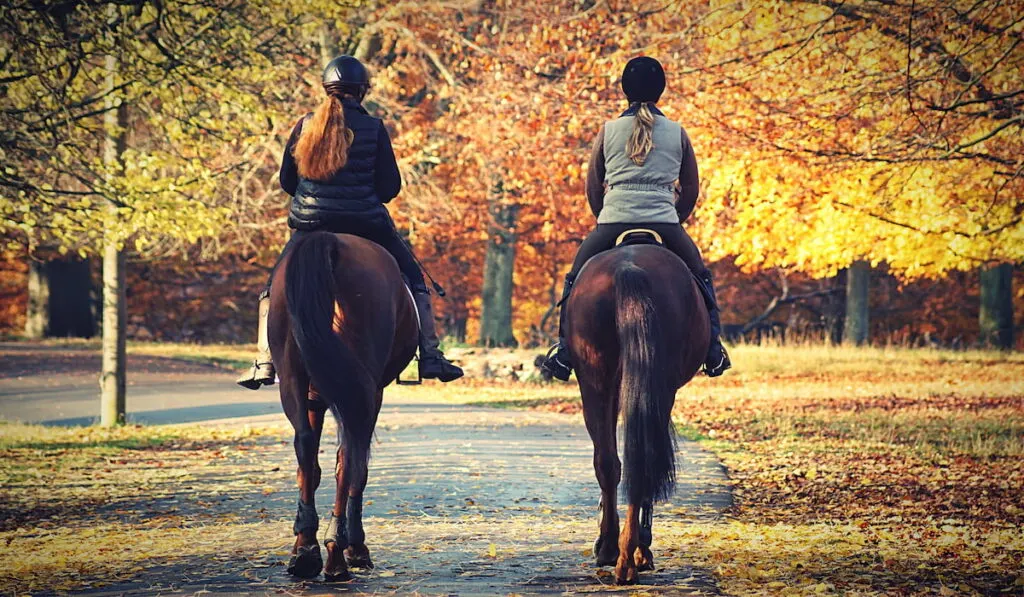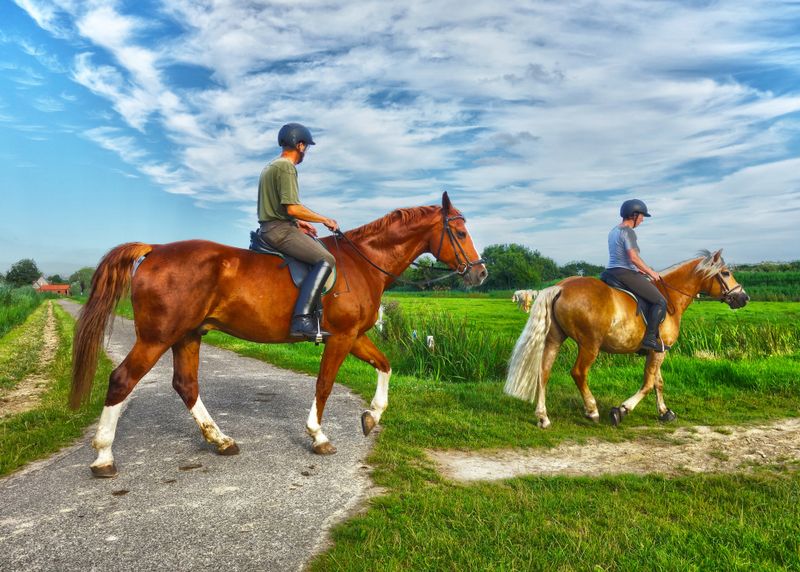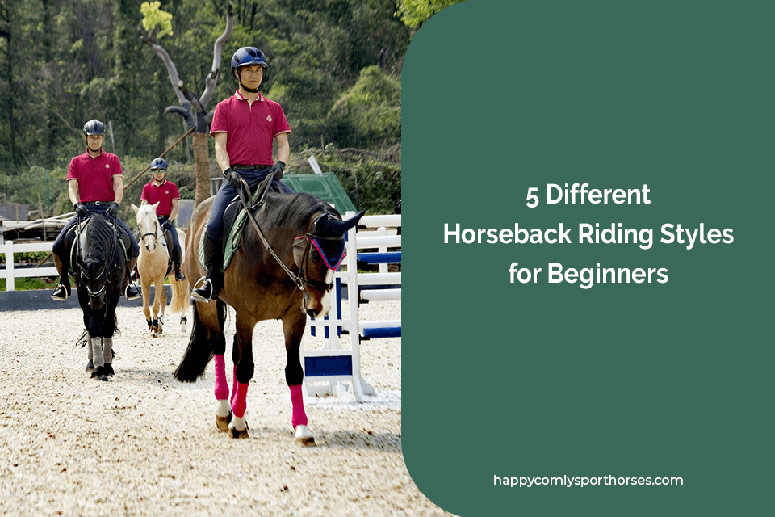Are you a horse enthusiast looking for reliable and engaging content about horseback riding techniques? Well, you’ve come to the right place! At “http://horsebackridingdude.com/”, we are dedicated to providing you with comprehensive information about all things related to horseback riding. Whether you’re a beginner or an experienced rider, we’ve got you covered.
In our upcoming blog posts, we will dive into various horseback riding techniques that will help you enhance your skills and connect with these magnificent creatures on a deeper level. From Western riding to English riding, we will explore different styles and disciplines to cater to all riding preferences. You will learn about proper riding form, how to communicate effectively with your horse, and tips for improving your balance and coordination in the saddle. Stay tuned to our website, as we will be uploading new posts regularly to keep you informed and entertained.
Remember, our goal is to not only provide you with reliable information but also make our content enjoyable and interesting. So, whether you’re a horse lover or simply curious about the world of horseback riding, our blog is the perfect place for you. Get ready to saddle up, because we’re about to embark on an exciting journey together. Keep an eye out for our upcoming posts and let’s explore the wonderful world of horseback riding!
Exploring Different Horseback Riding Techniques
Welcome to Horseback Riding Dude, your go-to source for all things related to horseback riding. In this article, we will explore the different techniques and styles of horseback riding. Whether you are a beginner or an experienced rider, there is always something new to learn and discover in the world of equestrianism. So hop in the saddle and let’s dive into the exciting world of horseback riding!
Different Types of Horseback Riding
English Riding
English riding is a popular style of horseback riding that originated in Europe. It is characterized by the use of an English saddle and a forward seat. The rider’s legs are positioned under their body, and they maintain a light contact with the horse’s mouth through the reins. This style of riding is commonly seen in disciplines such as show jumping, dressage, and eventing.
Western Riding
Western riding, on the other hand, is a traditional style of horseback riding commonly associated with cowboy culture. It features a Western saddle that provides more stability and support to the rider. Western riders often use a one-handed rein hold and have a deep seat. This style of riding is well-suited for activities such as trail riding, cattle work, and rodeo events.
Dressage
Dressage is an elegant and precise form of horseback riding that focuses on the harmony between horse and rider. It requires the horse to perform a series of intricate and controlled movements in response to subtle aids from the rider. Dressage tests are judged based on the horse’s impulsion, balance, and willingness to perform. It is often referred to as “horse ballet” due to the grace and fluidity of the movements.
Trail Riding
Trail riding is a leisurely form of horseback riding that involves exploring nature and scenic trails. It is a great way to relax and enjoy the beauty of the outdoors while bonding with your horse. Trail riders typically ride in a casual Western or English saddle and focus on enjoying the journey rather than technical skills or competitions.
Barrel Racing
Barrel racing is a thrilling and fast-paced rodeo event that requires speed, agility, and precision. Riders navigate their horses around three barrels in a cloverleaf pattern as quickly as possible, without knocking down any barrels. It requires a high level of horsemanship and precise control of the horse’s movements. Barrel racing is a popular event in Western riding competitions.
Benefits of Horseback Riding
Horseback riding offers a wide range of physical, mental, and emotional benefits. It is not only a fun and enjoyable activity but also a great way to stay fit and improve overall well-being. Let’s explore some of the key benefits of horseback riding:
Physical Fitness
Horseback riding is a form of exercise that engages various muscle groups in your body. It helps improve strength, balance, and coordination. Riding a horse requires core stability, leg strength, and upper body control. It is a low-impact activity that can also help improve cardiovascular fitness.
Mental Health
Spending time with horses and being in nature can have a positive impact on mental health. Horseback riding provides a sense of calmness and relaxation, reducing stress and anxiety. The rhythmic motion of the horse and the connection with the animal can boost mood and increase overall well-being.
Developing Coordination
Riding a horse involves coordinating different movements of your body. You need to synchronize your hands, legs, and seat to communicate effectively with the horse. This helps improve your overall coordination and body awareness.
Building Confidence
Horseback riding can boost self-confidence and self-esteem. As you develop your riding skills and build a bond with your horse, you gain a sense of achievement and trust in your abilities. Overcoming challenges and successfully navigating different riding techniques can lead to increased confidence both in and out of the saddle.

Choosing the Right Horse
Choosing the right horse for horseback riding is essential to ensure a safe and enjoyable experience. Consider the following factors when selecting a horse:
Breed Considerations
Different horse breeds have different temperaments, strengths, and abilities. Research different breeds and consider your riding goals to find a horse that suits your needs. Some breeds are known for their athleticism and are well-suited for specific disciplines, while others are better suited for leisurely trail rides.
Size and Age
Consider the size and age of the horse, as it should match your riding ability and physical stature. A horse that is too small or too large for you can be uncomfortable and pose potential safety risks. Likewise, a horse’s age can affect their energy level and training requirements.
Temperament
The temperament of a horse is crucial, especially for beginner riders. Look for a horse that is calm, well-mannered, and compatible with your riding style. Assess their behavior both on the ground and under saddle to ensure a good match.
Training Level
Consider the horse’s training level and experience in your desired riding discipline. If you are a beginner, you might want a horse that is well-trained and patient. More experienced riders may be interested in a horse that can perform advanced maneuvers and has competitive experience.
Tacking Up
Before you can start riding, it is essential to learn how to tack up your horse properly. Tacking up refers to the process of putting on the necessary equipment for riding, such as the saddle, bridle, and other accessories. Properly fitting and adjusting the tack ensures comfort for both you and the horse, and it promotes safety and communication between horse and rider.

Mounting and Dismounting
Mounting and dismounting are fundamental skills that every horseback rider should master. Mounting involves getting on the horse, while dismounting involves getting off the horse safely. Proper technique and balance are crucial to avoid accidents or discomfort for both you and the horse. Always ensure a secure and stable mounting block or assistance when mounting and dismounting.
Basic Riding Techniques
Once you are in the saddle, it’s time to learn some basic riding techniques that will help you communicate effectively with your horse and maintain balance and control. Here are some essential riding techniques to master:
Proper Seat and Position
Maintaining the correct seat and position is crucial for balance and communication with the horse. Sit upright with relaxed shoulders, heels down, and legs draped naturally against the horse’s sides. A proper seat allows you to absorb the horse’s movement and gives you a solid foundation.
Gripping the Reins
Gripping the reins properly allows you to communicate with your horse through rein aids. Hold the reins lightly with a soft, steady contact, keeping them even and balanced. Practice maintaining a consistent connection without pulling or yanking on the reins.
Leg Aids
Leg aids are used to cue the horse to move forward, turn, or change gaits. Use your legs and heels to apply pressure or squeeze against the horse’s sides as needed. Proper leg aids should be clear, consistent, and effective without being harsh or excessive.
Using the Whip
The whip can be used as an aid to reinforce your leg aids or as a correction tool when necessary. Use the whip sparingly and with precision, always aiming for positive reinforcement rather than punishment.

Advanced Riding Techniques
Once you have mastered the basics of horseback riding, you may be interested in exploring more advanced techniques. These techniques require a higher level of skill and coordination. Here are a few examples:
Jumping
Jumping involves guiding your horse over obstacles such as fences and hurdles. It requires precise timing, control, and a good sense of rhythm. Jumping can be a thrilling and challenging discipline, and it is commonly seen in show jumping and eventing competitions.
Collection and Extension
Collection and extension refer to the ability to adjust the horse’s stride length and frame to meet the demands of different movements. Collection involves shortening the horse’s stride and engaging its hindquarters, while extension involves lengthening the stride and showcasing the horse’s athleticism.
Half-pass
A half-pass is a lateral movement that involves moving the horse diagonally across the arena. The horse is positioned at an angle to the direction of travel, showcasing suppleness and obedience. It requires the rider to apply subtle aids and maintain balance and rhythm.
Piaffe
Piaffe is a highly collected, elevated, and cadenced movement where the horse remains in place while actively stepping in place. It requires the horse to engage its hindquarters and maintain a balanced, rhythmic trot. Piaffe is often seen in high-level dressage competitions.
Flying Lead Changes
Flying lead changes are transitions that involve the horse changing its leading front leg while maintaining the same rhythm and balance. It requires the horse to shift its weight and perform a smooth and effortless change in the canter lead.
Improving Balance and Stability
Balance and stability are key to becoming a skilled rider. Improving your balance and stability in the saddle allows you to maintain a correct position, communicate effectively with the horse, and handle various riding challenges. Here are some tips:
Exercises and Drills
Practice exercises and drills that focus on balance and stability. These can include exercises such as riding without stirrups, posting trot without using your hands for balance, and various balancing exercises on the ground.
Core Strength Training
Developing core strength is essential for maintaining balance and stability on the horse. Engage in off-horse exercises such as yoga, Pilates, or core-specific workouts to strengthen your abdominal and back muscles.

Horse Care and Maintenance
Proper horse care and maintenance are crucial for the well-being and performance of your horse. Here are a few aspects to consider:
Feeding and Nutrition
Ensure your horse receives a balanced diet that meets its nutritional needs. Provide access to fresh water, high-quality forage, and quality horse feed. Consult with a veterinarian or equine nutritionist to develop a suitable feeding program for your horse.
Grooming
Regular grooming is essential to keep your horse clean, healthy, and comfortable. Brushing, hoof care, mane and tail care, and bathing help maintain the horse’s coat and skin health. Grooming also promotes bonding between horse and rider.
Health Check-ups
Schedule regular veterinary check-ups to ensure your horse’s health and well-being. Vaccinations, dental care, deworming, and routine health examinations are vital for preventing illnesses and addressing any underlying health issues.
Shoeing
Horses’ hooves need regular care and maintenance. Consult with a professional farrier to determine the appropriate shoeing or trimming schedule for your horse. Proper hoof care is essential for soundness and performance.
Safety Tips
As with any equestrian activity, horseback riding carries inherent risks. Follow these safety tips to ensure a safe and enjoyable riding experience:
- Always wear a properly fitted helmet and appropriate riding attire.
- Respect the horse and never engage in rough handling or aggressive behavior.
- Be aware of your surroundings and ride in a controlled environment.
- Warm up your horse before engaging in more intense activities.
- Always ride within your skill level and seek professional instruction when needed.
- Practice good horsemanship and maintain regular training and education.

Common Mistakes to Avoid
As a rider, it is important to be aware of common mistakes and pitfalls to avoid. Here are a few examples:
- Gripping the reins tightly or using excessive rein aids.
- Relying solely on the reins for balance instead of engaging your core and seat.
- Neglecting to warm up and cool down your horse before and after riding.
- Riding with a tense body or stiff position, inhibiting your horse’s movement and communication.
Competitions and Events
For those riders interested in testing their skills and competing, there are various horseback riding competitions and events to consider. Here are a few examples:
Show Jumping
Show jumping is a popular equestrian sport that involves navigating a series of jumps and obstacles within a specific time frame. The horse and rider combination that clears the course with the fewest faults or penalties wins. Show jumping competitions can range from local shows to international events.
Dressage Competitions
Dressage competitions showcase the horse’s training and obedience through a series of predetermined movements. Judges evaluate the horse’s gaits, obedience, and overall harmony with the rider. Dressage competitions are held at various levels, from local shows to the Olympic Games.
Endurance Racing
Endurance racing tests the stamina and fitness of horse and rider. Competitors ride long distances, often over challenging terrain, in a set time period. The goal is to cross the finish line with a sound horse within the specified time limit. Endurance racing can range from shorter rides to multi-day events.
Conclusion
Horseback riding is a rewarding and versatile activity that offers a wide range of techniques and disciplines to explore. Whether you are interested in the elegance of dressage, the thrill of barrel racing, or the tranquility of trail riding, there is something for everyone in the world of horseback riding. Remember to prioritize safety, seek professional guidance when needed, and most importantly, have fun while forging a special bond with your equine partner.
Frequently Asked Questions
-
Q: Is horseback riding suitable for beginners? A: Yes, horseback riding is suitable for beginners. It is important to start with a well-trained and calm horse and seek professional instruction to learn the basics of riding.
-
Q: How do I choose the right size horse for me? A: The right horse size is determined by your physical stature and riding ability. Consult with experienced equestrians or trainers to assist you in finding the right size horse.
-
Q: What equipment do I need for horseback riding? A: The essential equipment for horseback riding includes a properly fitted helmet, riding boots, breeches or riding pants, and a comfortable riding shirt. Additionally, you will need a properly fitted saddle and bridle for your horse.
-
Q: How often should I groom my horse? A: Regular grooming should be done daily to keep your horse clean and healthy. This includes brushing, hoof care, mane and tail care, and regular baths as needed.
-
Q: What should I do if I fall off a horse? A: If you fall off a horse, it is important to assess your injuries and seek medical attention if necessary. Take the time to calm down and regain your confidence before getting back on the horse.
-
Q: Are there age restrictions for horseback riding? A: There are no strict age restrictions for horseback riding. However, younger children may require supervision and the use of smaller, well-trained ponies.
-
Q: How can I improve my riding skills? A: Improving your riding skills requires practice, patience, and consistent training. Seek professional instruction, participate in clinics or workshops, and set realistic goals to continually challenge yourself.
-
Q: Are there weight restrictions for horseback riding? A: Weight restrictions can vary depending on the horse’s size and build. It is important to consider the horse’s well-being and comfort when determining weight limits.
-
Q: What is the best way to bond with your horse? A: Spending quality time with your horse, grooming, and participating in activities such as groundwork and trail rides can help strengthen the bond between you and your horse.
-
Q: Can horseback riding help with anxiety or stress? A: Yes, horseback riding can have therapeutic benefits and help reduce anxiety and stress. The calming presence of horses and the connection between horse and rider can promote relaxation and overall well-being.
